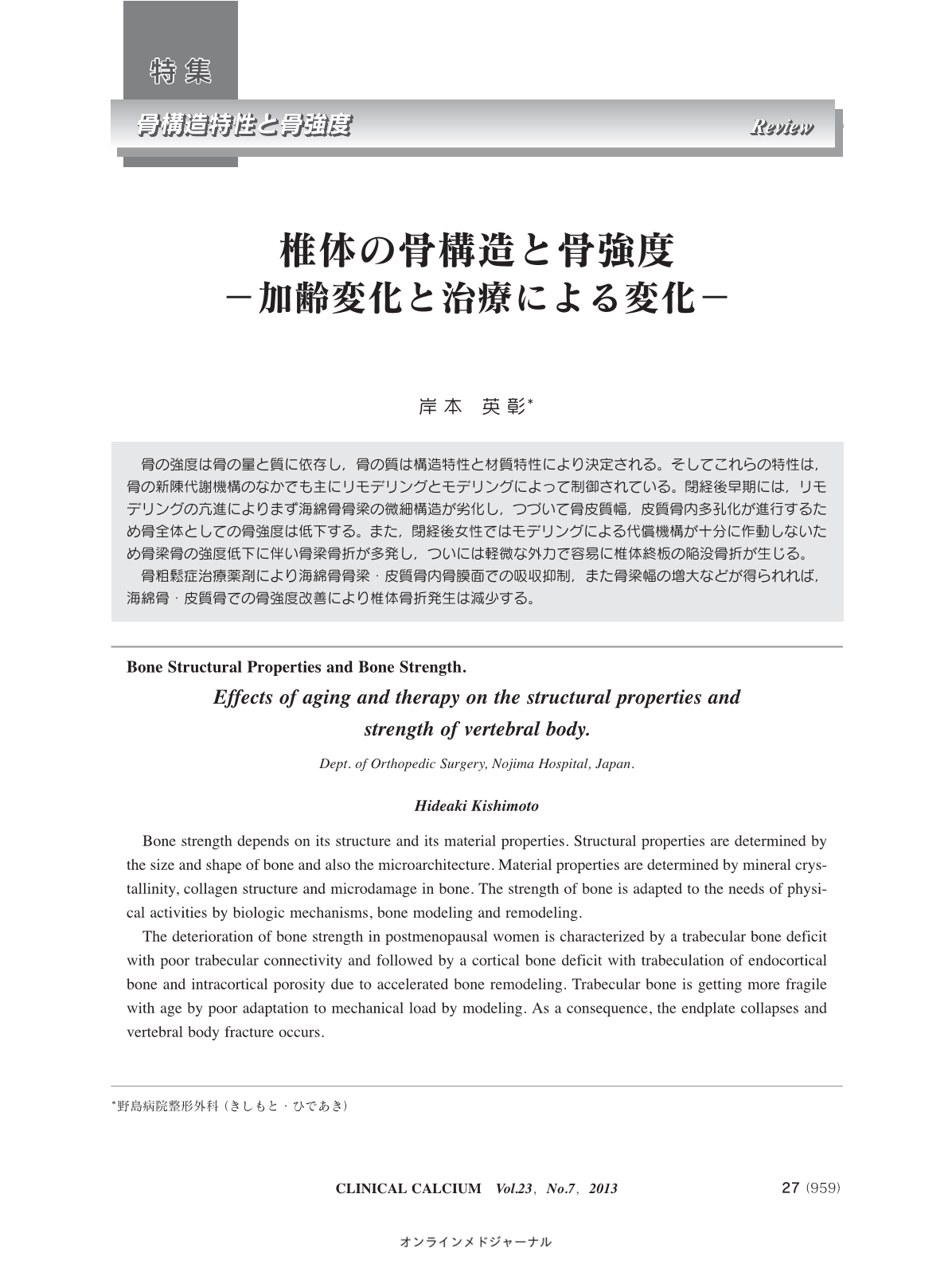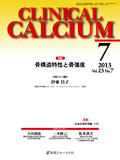Japanese
English
- 有料閲覧
- Abstract 文献概要
- 1ページ目 Look Inside
- 参考文献 Reference
骨の強度は骨の量と質に依存し,骨の質は構造特性と材質特性により決定される。そしてこれらの特性は,骨の新陳代謝機構のなかでも主にリモデリングとモデリングによって制御されている。閉経後早期には,リモデリングの亢進によりまず海綿骨骨梁の微細構造が劣化し,つづいて骨皮質幅,皮質骨内多孔化が進行するため骨全体としての骨強度は低下する。また,閉経後女性ではモデリングによる代償機構が十分に作動しないため骨梁骨の強度低下に伴い骨梁骨折が多発し,ついには軽微な外力で容易に椎体終板の陥没骨折が生じる。 骨粗鬆症治療薬剤により海綿骨骨梁・皮質骨内骨膜面での吸収抑制,また骨梁幅の増大などが得られれば,海綿骨・皮質骨での骨強度改善により椎体骨折発生は減少する。
Bone strength depends on its structure and its material properties. Structural properties are determined by the size and shape of bone and also the microarchitecture. Material properties are determined by mineral crystallinity, collagen structure and microdamage in bone. The strength of bone is adapted to the needs of physical activities by biologic mechanisms, bone modeling and remodeling. The deterioration of bone strength in postmenopausal women is characterized by a trabecular bone deficit with poor trabecular connectivity and followed by a cortical bone deficit with trabeculation of endocortical bone and intracortical porosity due to accelerated bone remodeling. Trabecular bone is getting more fragile with age by poor adaptation to mechanical load by modeling. As a consequence, the endplate collapses and vertebral body fracture occurs. The deterioration of bone strength could be improved by osteoporosis treatment using antiresorber or teriparatide, and these drugs would decrease the risk of vertebral fracture consequently.



